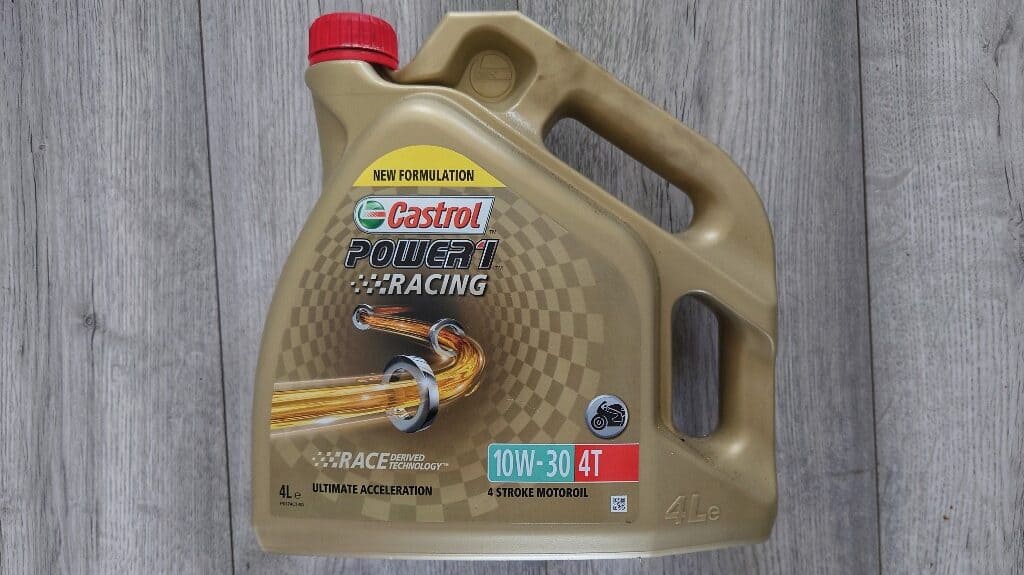Engine oil serves as a coolant to an engine. It is defined as a liquid whose primary function is to reduce friction between moving parts within the engine. The oil within the engine also collects and holds any debris and deposits them into the oil filter. It also neutralizes and entrains (draws in and transports) acids and moisture created by combustion.
Mixing different engine oils with similar viscosities will not do any short-term harm. However, if the various oils are of vastly different viscosity, damage may occur over a period of time. It is recommended that the mixed oil be drained as soon as possible and replaced with the correct oil as recommended by the manufacturer.

What is viscosity?
Viscosity is a measure of any fluid’s resistance to flow, which describes a moving fluid’s initial friction. A fluid with greater viscosity resists motion since its molecular structure gives it a lot of internal friction. In layman’s terms, the viscosity corresponds to the thickness of a fluid. For example, oil has a higher viscosity than water, and so does syrup.
Oil protects the engine against oxidation, mostly when the bike is left to sit idle for a while. Oil is vital for internal combustion in the engine. Mixing different brands or grades of oil has been widely discussed and is a common question for motorcycle owners. The rest of this article aims to put a motorcycle owner’s mind at ease!
Can You Mix Different Brands Of Oil In A Motorcycle?
There are many motorcycle oil brands on the market, and most of them are in a similar price range. It is ideal keeping the same oil brand in the engine, especially when topping it up with oil.
Experienced riders and engine designers will highly advise that the same brand and type of oil always be used within a particular engine. Only in matters of an emergency or lack of options should there be any reason to mix oils.
Mixing different oil brands is not an immediate issue if necessary. Mixing oils without fear of any direct dangerous effects to the engine. It is better to keep the oil tank full with oil than not to add oil because you can’t find the same brand.
The viscosity of the oil being used is an essential factor to be aware of when mixing oils. If you use oils with similar viscosities, there should be minimal problems even when mixing brands. It is good to stay with identical oil types and consistencies when adding different oil brands to the engine.
If there is a situation requiring the mixing oils, it is crucial to replace the oil as soon as possible with the correct one that works best for the specific bike and model recommended by the manufacturer.
Using the correct oil in a motorcycle’s engine or any engine, as a matter of fact, is an essential part of keeping the engine running to its optimum performance as well as adding to the longevity of the engine.

Can You Use Diesel Engine Oil In A Motorcycle Engine?
Diesel engine oils can provide decent service in motorcycle engines but are not considered good value for the bike, despite a potentially cheaper price tag.
Motorcycle oils are made specifically for the performance and protection of the engine. The base oil and additive package are a precise combination that works efficiently to add to the motorcycle engine’s safety and giving maximum performance.
Diesel oils will not have these same combinations and chemistry. Diesel oils work in motorcycles because the oil does not contain friction modifiers. However, it is essential to understand that these oils are not formulated for motorcycle transmission.
When used in standard oil sumps, diesel oil has a reputation of sheering down and even losing viscosity. Motorcycle transmission involves the meshing of gears that can sheer down oils not designed for that type of use. This factor alone will produce rapid thinning and reduce the diesel oil’s ability to protect the engine in most common sumps.
Synthetic Motorcycle Oils Vs. Regular Motorcycle Oils
Synthetic oil is an artificial lubricant made from chemical compounds. The base material is still predominantly crude oil that has been distilled and adjusted physically and chemically.
Synthetic oils have been called designer oils because of the different applications they can be designed for. Various processes produce different combination groups in the oil that can be used in different applications as required.
There are many benefits to using synthetic motorcycle oils. Synthetic oils protect the engine better when driving in heat conditions, and this type of oil flows better than other oils in colder conditions. Synthetic oil will cause the engine to run cooler and to run smoother.
Synthetic oil can withstand the heat better and not break down at high temperatures or heavy loads. Most motorcycles can operate bat heigh RPM’s say 7,000 – 10,000 rpm or more. Synthetic motor oils can tolerate these high temperatures over a more extended period and handle the extreme heat that goes hand in hand with the high RPMs.
When using synthetic oils, you will find that there will be smoother shifting and will include a superior detergent package that cleans up impurities more efficiently.
Another benefit of using synthetic oils is that the intervals between changing the oil will be higher (more miles to your buck!) and better overall engine performance.
While synthetic oils have many benefits, it is strongly advised not to break in a motorcycle with synthetic oil. The first type of oil used in your motorcycle engine should always be regular or conventional motorcycle oil.
This is because synthetic oils are of higher quality, making them more slippery, which means that it will take longer for the engine to settle. Conventional motorcycle oil allows the pistons to sit quicker.
Most engine builders suggest using conventional motorcycle oil to break in the motorcycle and use regular oil for the first 300-600 miles. It is recommended to only make the switch to synthetic oil at the first service of the motorcycle.
It is possible to switch between synthetic and regular motorcycle oil in your engine. For most riders, conventional or standard motorcycle oil is more affordable, whereas synthetic motorcycle oil, although more costly, has the most benefits.
What To Do When You’ve Used The Wrong Oil In Your Motorcycle?
There may come a scenario under which a rider accidentally puts car oil in a motorcycle and is unsure what to do. Car oils focus on reducing friction between moving parts to improve fuel economy and reduce emissions. They contain friction modifiers that are formulated for this purpose.
Car oils have detergent additives with high ash content which can cause the formation of deposits on the piston crowns or the valve train. These deposits often cause a pressure build-up that can lead to the perforation or burning of components.
Motorcycles are different from cars in that they use the same oil for both the gearbox and the engine. Oil made for motorcycles is uniquely designed to protect the engine and for the transmission gears’ operation.

In the case of accidentally putting car oil in a motorcycle, the first thing to do is drain the oil. Once the oil is drained, refill the sump with JASO-MA certified oil of the correct viscosity.
After the car oil has been drained from the motorcycle, there may still be remaining traces of the previous oil found in the sump, however, this should not cause any damage to the bike.
A Brief Explanation Of Viscosity
The measure of a fluid’s resistance to flow is called viscosity. It represents the internal friction of moving fluid in the engine and essentially is a measure of the oil’s thickness.
If oil has a large viscosity, it will have more resistance to flow because its molecular makeup gives it more internal friction. In more simple words, large viscosity will mean the oil is thicker.
Oils come in different thicknesses or viscosities, such as 20W50 or 10W30. These numbers are multi-grades. For more information about viscosities, you can read my article by clicking HERE.
The less the viscosity of the oil will mean less resistance there is to the flow. Most oils are measured according to viscosity. Combining oils with vastly different viscosities can cause damage to the engine, and the oils will not mix well.
Viscosity is an essential measuring factor when assessing fluids that are used for lubrication, such as oils in motorcycle engines.
Conclusion
Suppose you find yourself in a situation that requires adding any oil into the engine to get yourself home or out of a particular scenario. In that case, it is vital to be aware of a few things.
- When using regular or conventional motorcycle oil in your sump and you need to mix with another oil or brand, try to pair oils that have similar viscosities. Remember to remove the mixed oil as soon as possible and replace it with the correct oil.
2. If you are combining regular oil with synthetic oil, make sure to pair similar viscosities and avoid using oils that do not have a JASO-MA, MA1, or MA2 rating.
3. Do your best to avoid mixing oils and try to stick to the same type of oil and brand that works best for your bike, usually the manufacturer’s recommendation.
4. Replace the mixed oil as soon as possible with thcorrect oil for your bike.
Mixing oils is possible and can work but is not recommended for the motorcycle engine’s benefit.
References
https://en.wikipedia.org/wiki/Viscosityhttps://www.oildepot.ca/diesel-engine-oil-ok-motorcycles/





